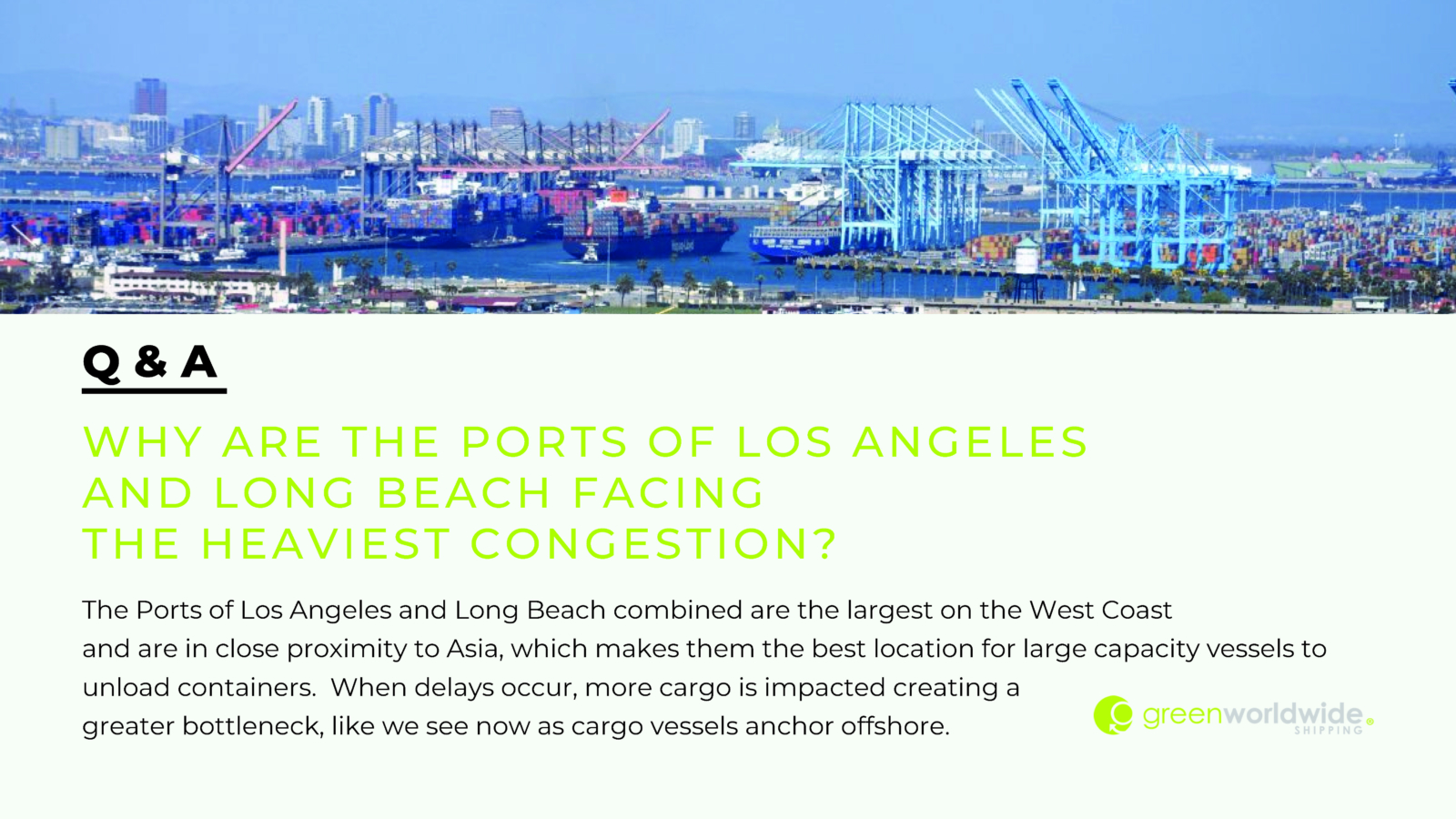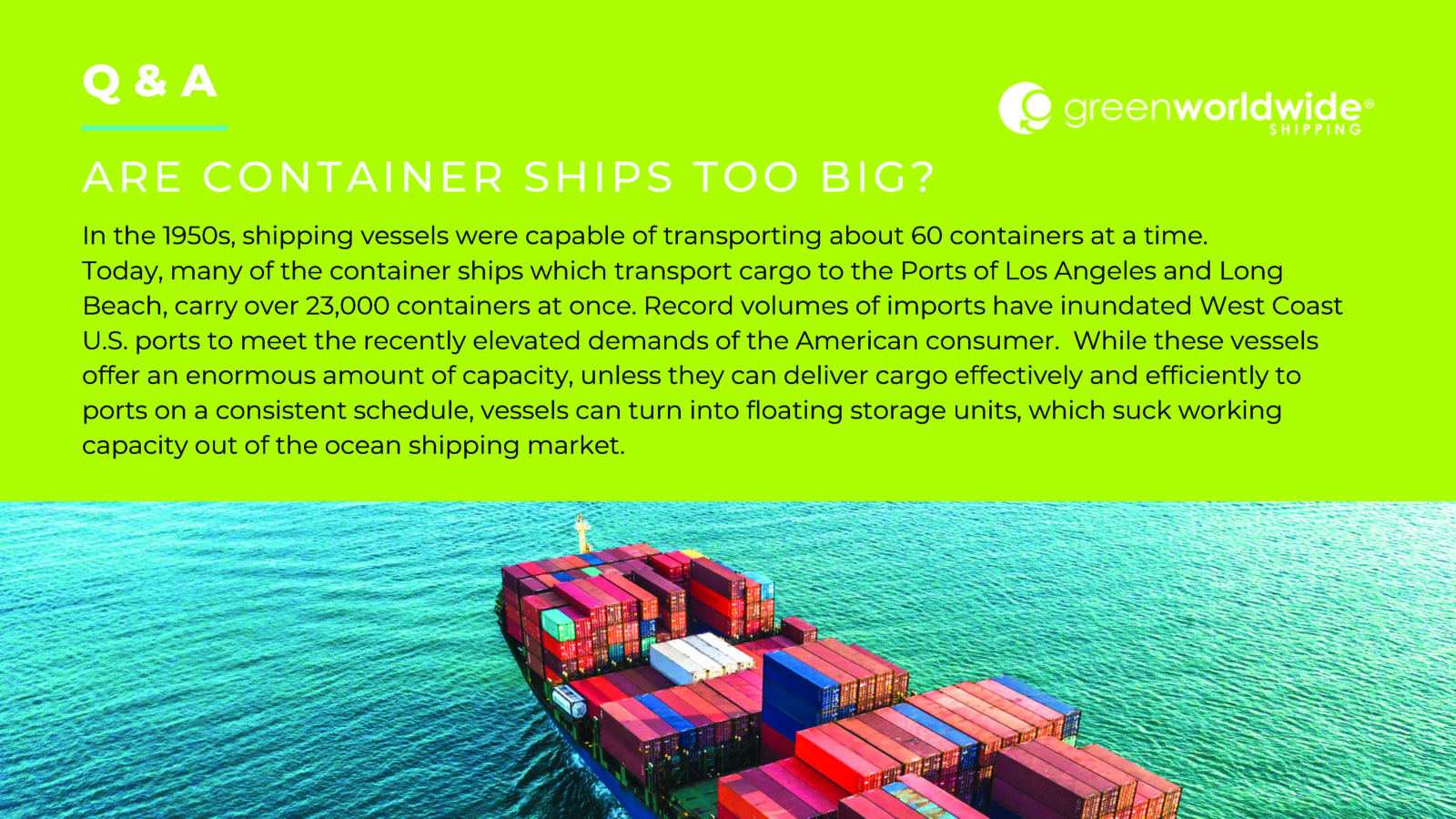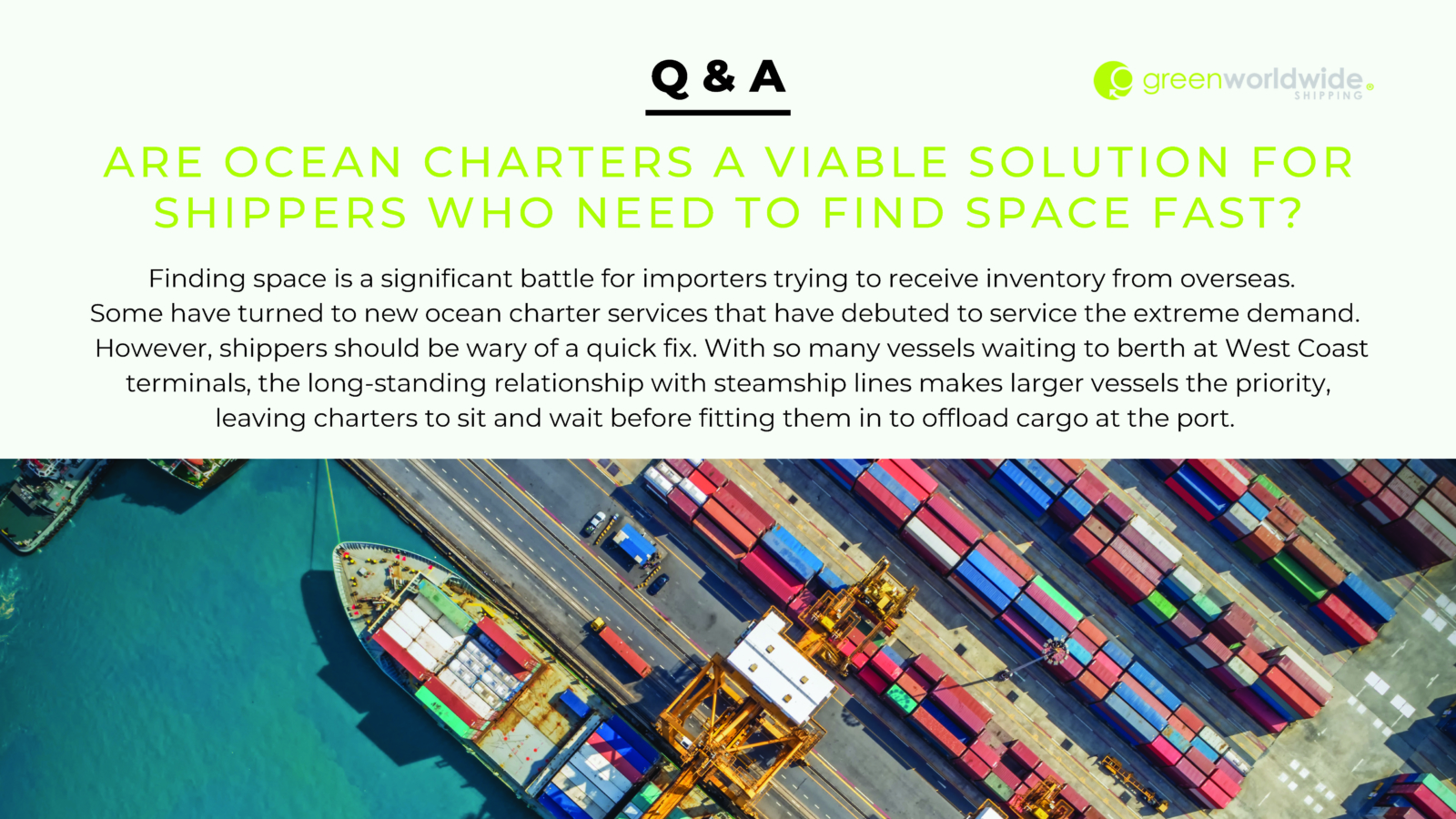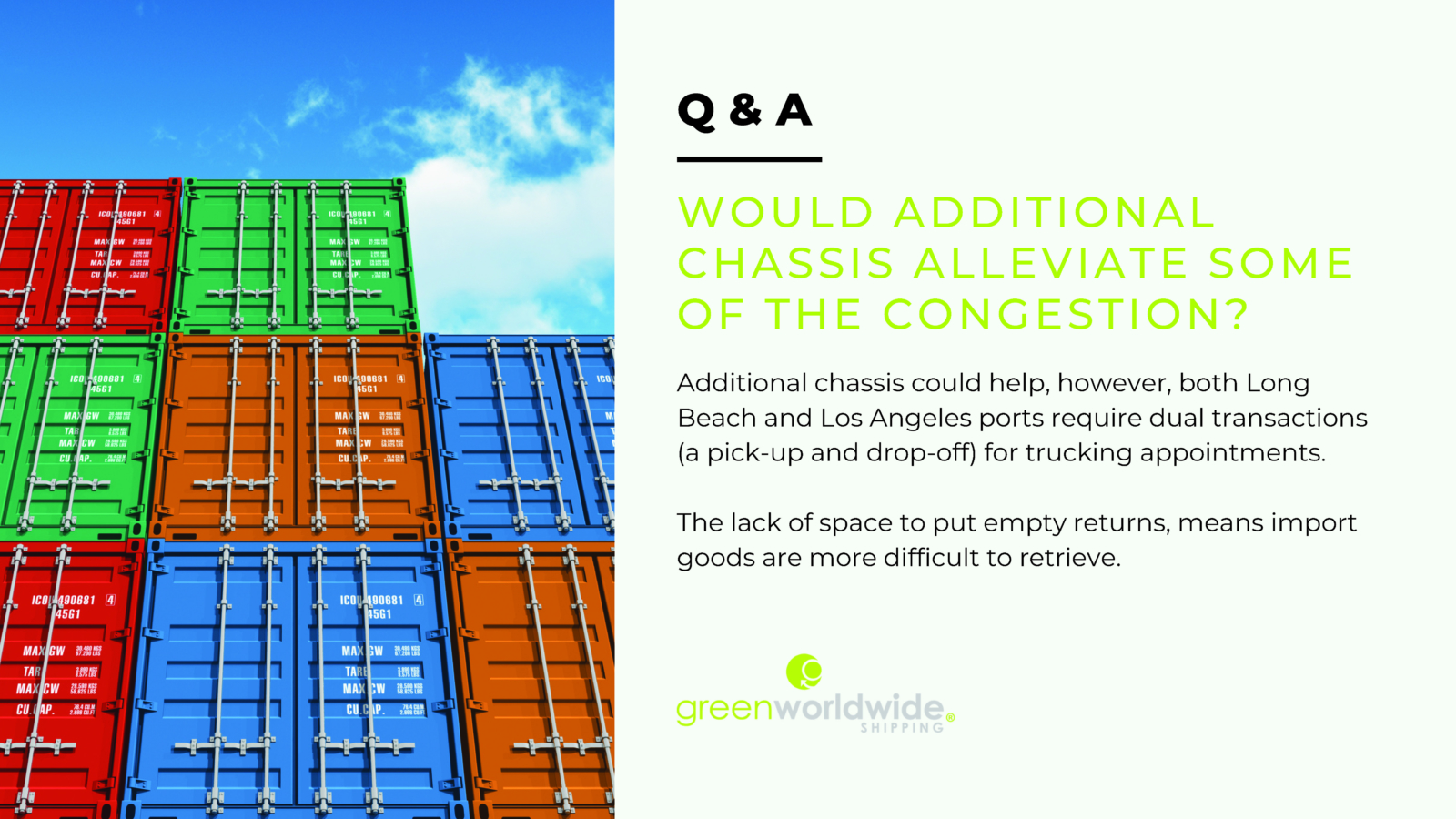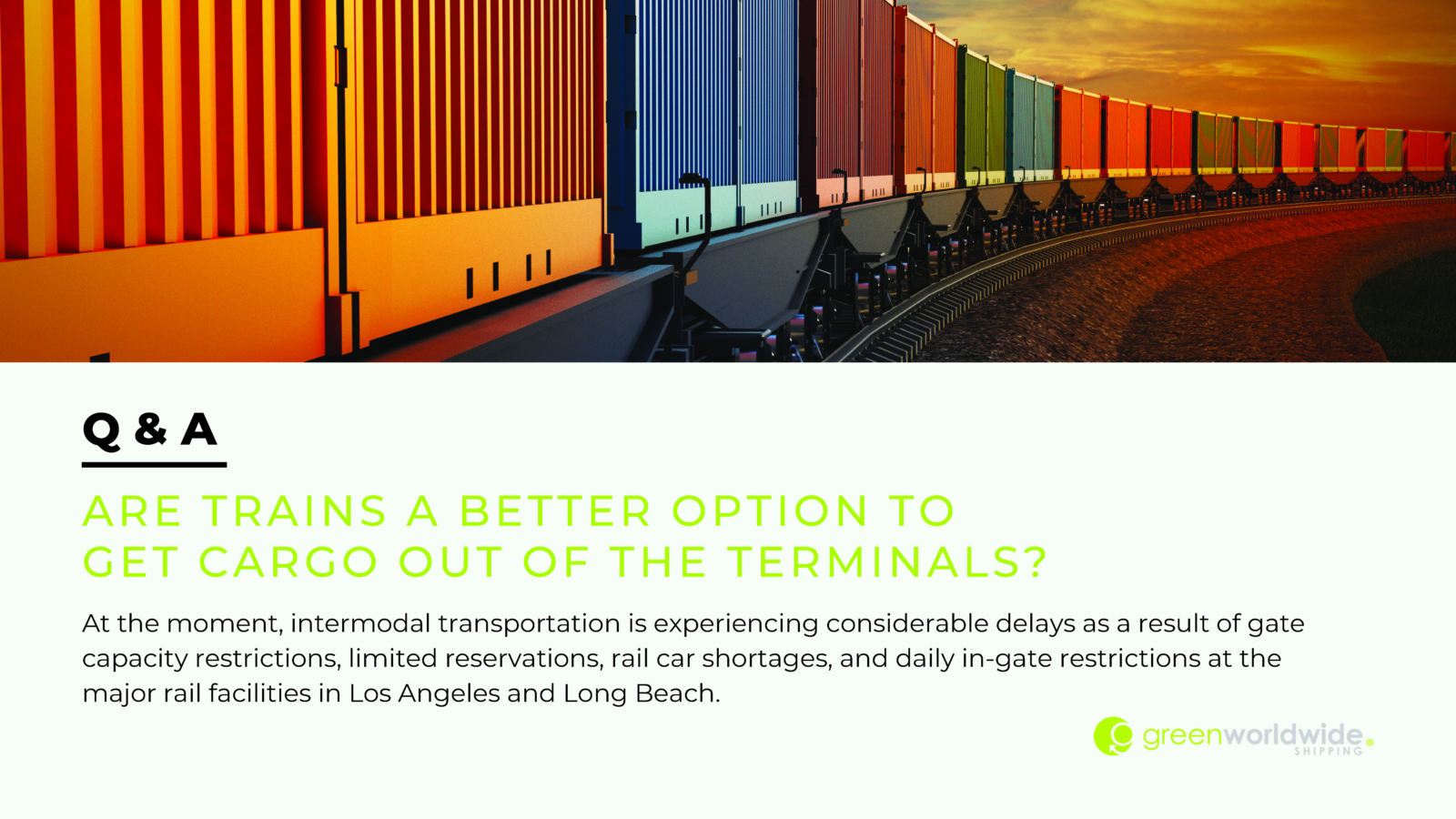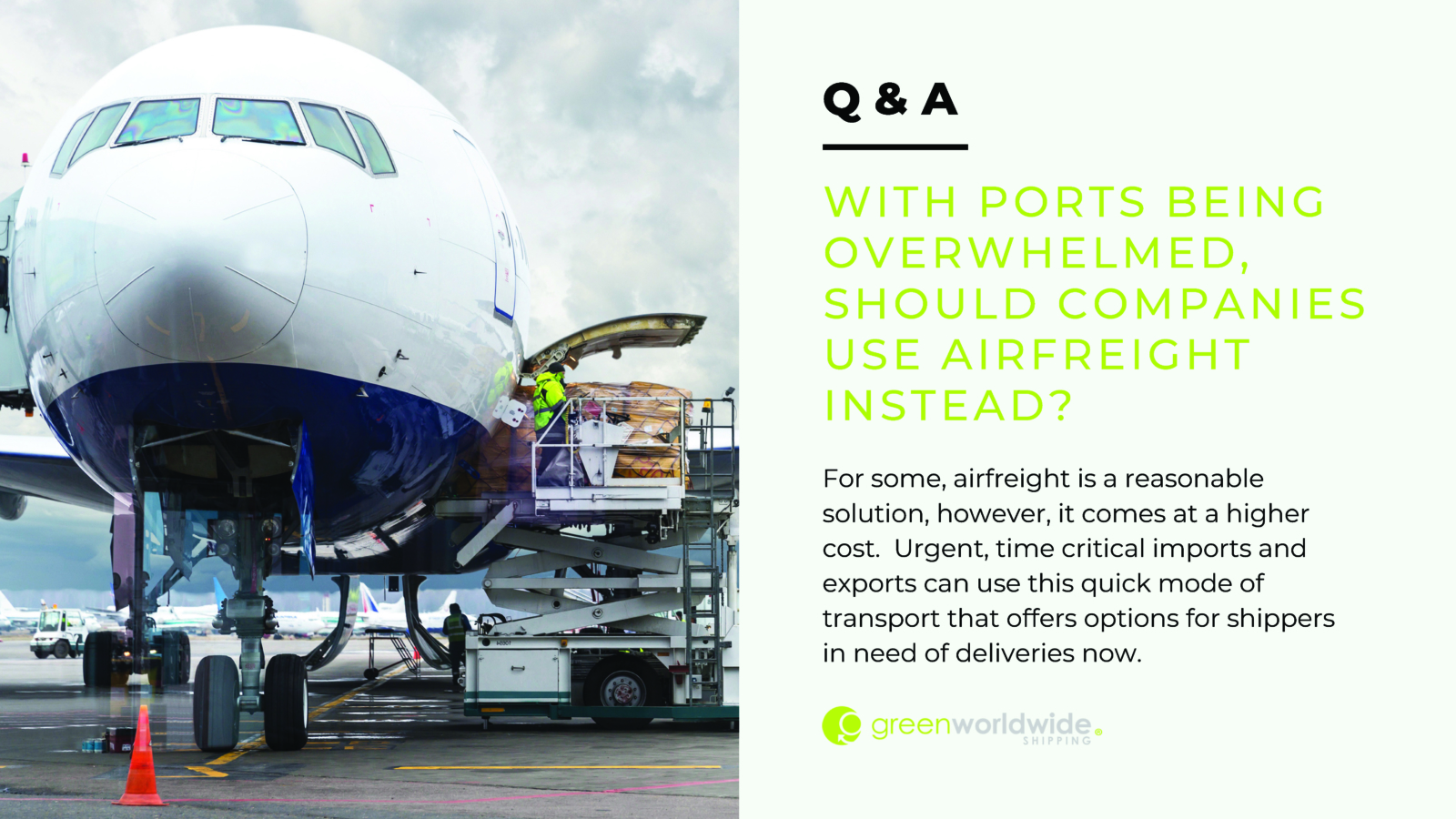Why are the Ports of Los Angeles and Long Beach facing the heaviest congestion?
The Ports of Los Angeles and Long Beach combined are the largest on the West Coast and are in close proximity to Asia, which makes them the best location for large capacity vessels to unload containers. When delays occur, more cargo is impacted creating a greater bottleneck, like we see now as cargo vessels anchor offshore.
Are container ships too big?
In the 1950s, shipping vessels were capable of transporting about 60 containers at a time. Today, many of the container ships which transport cargo to the Ports of Los Angeles and Long Beach, carry over 23,000 containers at once. Record volumes of imports have inundated West Coast U.S. ports to meet the recently elevated demands of the American consumer. While these vessels offer an enormous amount of capacity, unless they can deliver cargo effectively and efficiently to ports on a consistent schedule, vessels can turn into floating storage units, which suck working capacity out of the ocean shipping market.
Are ocean charters a viable solution for shippers who need to find space fast?
Finding space is a significant battle for importers trying to receive inventory from overseas. Some have turned to new ocean charter services that have debuted to service the extreme demand. However, shippers should be wary of a quick fix. With so many vessels waiting to berth at West Coast terminals, the long-standing relationship with steamship lines makes larger vessels the priority, leaving charters to sit and wait before fitting them in to offload cargo at the port.
What is causing the backlog at the terminals?
Much of the terminal congestion on the West Coast can be attributed to equipment limitations and space restrictions for the return of empty containers. Without the ability to return equipment, both containers and chassis that are needed for import cargo are in short supply causing additional issues for delivering cargoes.
Would additional chassis alleviate some of the congestion?
Additional chassis could help, however, both Long Beach and Los Angeles ports require dual transactions (a pick-up and drop-off) for trucking appointments. The lack of space to put empty returns, means import goods are more difficult to retrieve.
Are trains a better option to get cargo out of the terminals?
At the moment, intermodal transportation is experiencing considerable delays as a result of gate capacity restrictions, limited reservations, rail car shortages, and daily in-gate restrictions at the major rail facilities in Los Angeles and Long Beach.
With ports being overwhelmed, should companies use airfreight instead?
For some, airfreight is a reasonable solution, however, it comes at a higher cost. Urgent, time critical imports and exports can use this quick mode of transport that offers options for shippers in need of deliveries now.
Stay up-to-date on freight news with Green’s Weekly Freight Market report by following us on Facebook, Twitter, and LinkedIn. For continuous updates, make sure to check out our website at greenworldwide.com.

